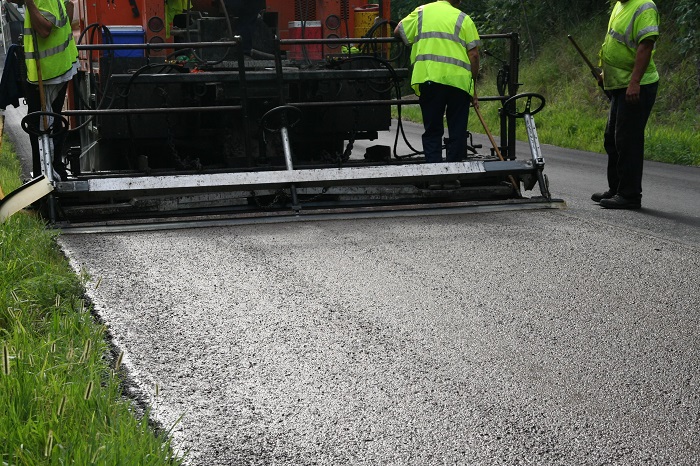
The importance of tarmac resurfacing: what it is and why you need it
Asphalt pavement restoration is essential to ensure road safety.
Tarmac resurfacing Kings Lynn is a professional service that revitalises worn-out paved surfaces, ensuring they remain functional, safe, and visually appealing. As one of the most widely used materials for driveways, car parks, and roadways, tarmac (short for tarmacadam) is prized for its durability and cost-effectiveness. However, even the strongest surfaces are not immune to the effects of time, weather, and constant use.
Resurfacing provides a practical solution to common problems such as cracks, potholes, and discolouration, restoring the surface without the need for complete reconstruction. In this article, we’ll explore the concept of tarmac resurfacing, the benefits it offers, and why it’s an essential service for maintaining paved areas.
What Is Tarmac Resurfacing?
Tarmac resurfacing involves applying a fresh layer of tarmac over an existing surface, repairing damage and improving both the structure and appearance. Unlike replacing the surface entirely, resurfacing utilises the existing foundation, making it faster, more economical, and environmentally friendly.
This service is suitable for a wide range of applications, from residential driveways to high-traffic roadways. By addressing issues early, resurfacing prolongs the life of tarmac surfaces and prevents more extensive repairs in the future.
Common Issues Resolved by Tarmac Resurfacing
1. Cracks and Gaps
Temperature changes, heavy traffic, and natural wear can cause cracks to form in tarmac. These cracks allow water to penetrate, weakening the surface over time. Resurfacing seals these gaps, preventing further damage.
2. Potholes
Potholes are a hazard for vehicles and pedestrians alike. Resurfacing fills these depressions, creating a smooth and stable surface that eliminates safety risks.
3. Fading and Discolouration
UV exposure and environmental factors can cause tarmac to lose its rich, dark appearance. A new layer of tarmac restores its colour, improving the overall look of the area.
4. Drainage Problems
Poorly graded tarmac can lead to standing water, accelerating surface degradation. Resurfacing corrects these issues, improving water runoff and preventing long-term damage.
5. Uneven or Warped Areas
High usage areas can become uneven, making them less safe and visually unappealing. Resurfacing evens out the surface, ensuring consistency and safety.
How Tarmac Resurfacing Works
Step 1: Initial Assessment
A professional inspection identifies the extent of the damage and determines whether resurfacing is the appropriate solution.
Step 2: Surface Cleaning
The existing surface is thoroughly cleaned to remove dirt, debris, and loose particles, ensuring the new layer adheres effectively.
Step 3: Repairing Damage
Cracks, potholes, and weak spots are repaired, providing a solid base for the new tarmac layer.
Step 4: Application of Fresh Tarmac
A new layer of tarmac is applied and compacted using specialised equipment, creating a durable and smooth finish.
Step 5: Finishing Touches
Edges are refined, and the surface is left to cure. Once cured, the resurfaced area is ready for use.
Key Benefits of Tarmac Resurfacing
1. Cost-Effective Solution
Resurfacing is far more affordable than replacing the entire surface. It provides a renewed look and improved durability without the expense of a complete overhaul.
2. Prolonged Lifespan
Adding a new layer of tarmac strengthens the surface, extending its usability by years.
3. Enhanced Safety
Cracks and potholes pose risks to both vehicles and pedestrians. Resurfacing eliminates these hazards, ensuring a safer environment.
4. Improved Aesthetic Appeal
A resurfaced tarmac area looks clean, polished, and professional, enhancing the overall appearance of the property.
5. Environmentally Friendly Option
Resurfacing generates less waste and often uses recycled materials, making it a sustainable choice for maintaining paved surfaces.
Why Is Tarmac Resurfacing Essential?
Resurfacing is not just about improving the appearance of tarmac surfaces; it’s a proactive maintenance strategy that offers long-term benefits. Here’s why it matters:
Preserves Structural Integrity
Over time, untreated damage can compromise the strength of a tarmac surface. Resurfacing reinforces the structure, preventing further deterioration.
Reduces Costs Over Time
Addressing issues through resurfacing is more affordable than waiting until complete replacement becomes necessary. It’s a smart financial decision for property owners.
Enhances Property Value
Well-maintained tarmac surfaces contribute to the overall value of a property, whether residential or commercial.
Supports Safer Communities
In public areas, smooth and even tarmac surfaces reduce the risk of accidents, creating safer spaces for everyone.
Maintains Aesthetic Standards
For businesses and homeowners alike, first impressions matter. A well-resurfaced driveway or parking lot can make a big difference in how a property is perceived.
When Should You Consider Tarmac Resurfacing?
Knowing when to resurface your tarmac is essential to maintaining its functionality and appearance. Signs that resurfacing may be needed include:
- Visible cracks or potholes.
- A faded, grey appearance.
- Water pooling or drainage issues.
- Uneven or bumpy areas.
- Repeated need for minor repairs.
Addressing these issues early can prevent more extensive damage, saving time and money in the long run.
Conclusion
Tarmac resurfacing is a vital service for maintaining the longevity, safety, and aesthetic quality of paved surfaces. It’s a practical, cost-effective alternative to full replacement, offering numerous benefits for residential, commercial, and public spaces.
From repairing cracks and potholes to restoring colour and evenness, resurfacing ensures that tarmac surfaces remain functional and visually appealing. For property owners looking to protect their investment and enhance their surroundings, professional tarmac resurfacing is an essential solution.
Let me know if you’d like further customisations or an even deeper dive into this topic!


